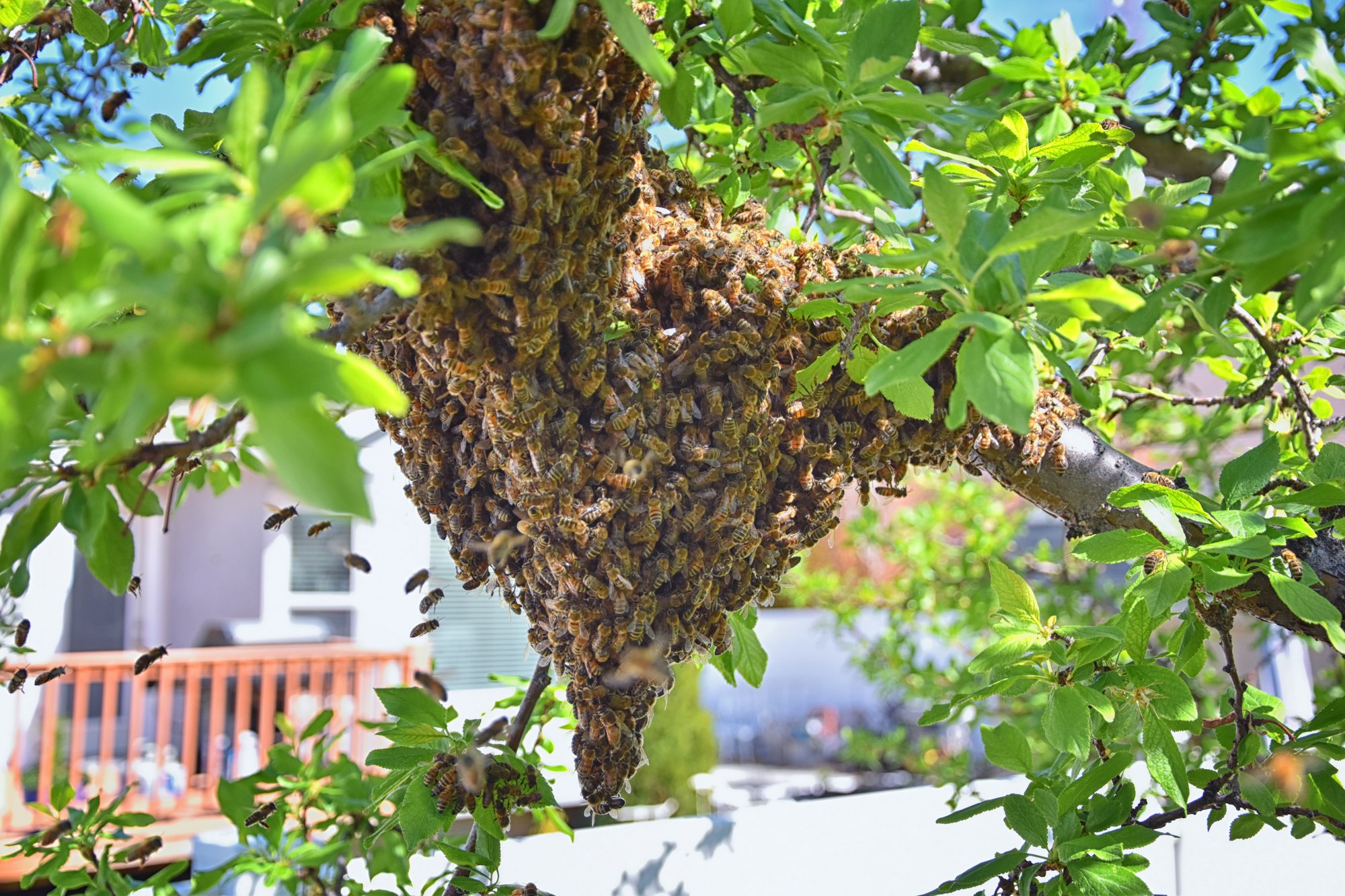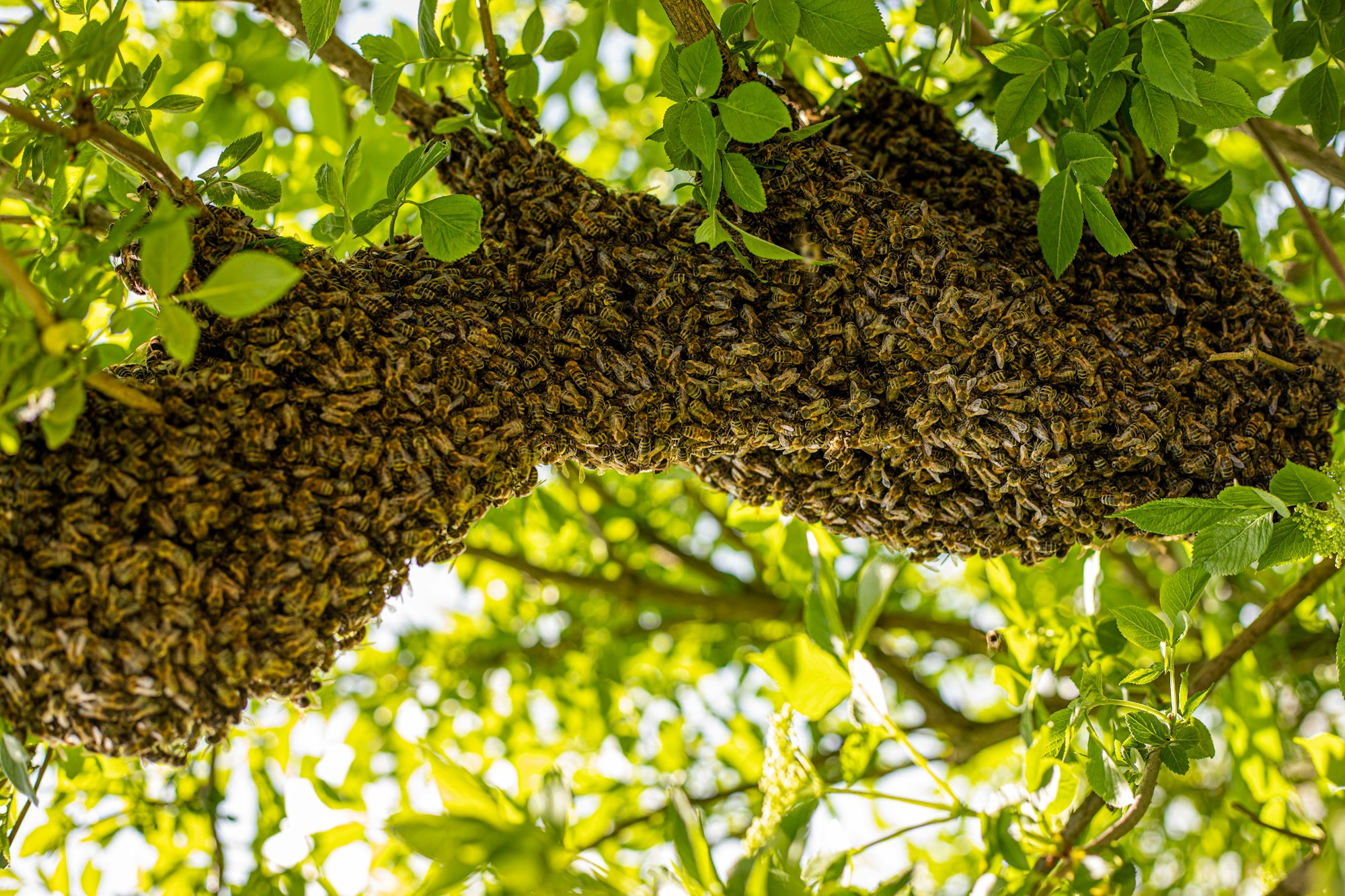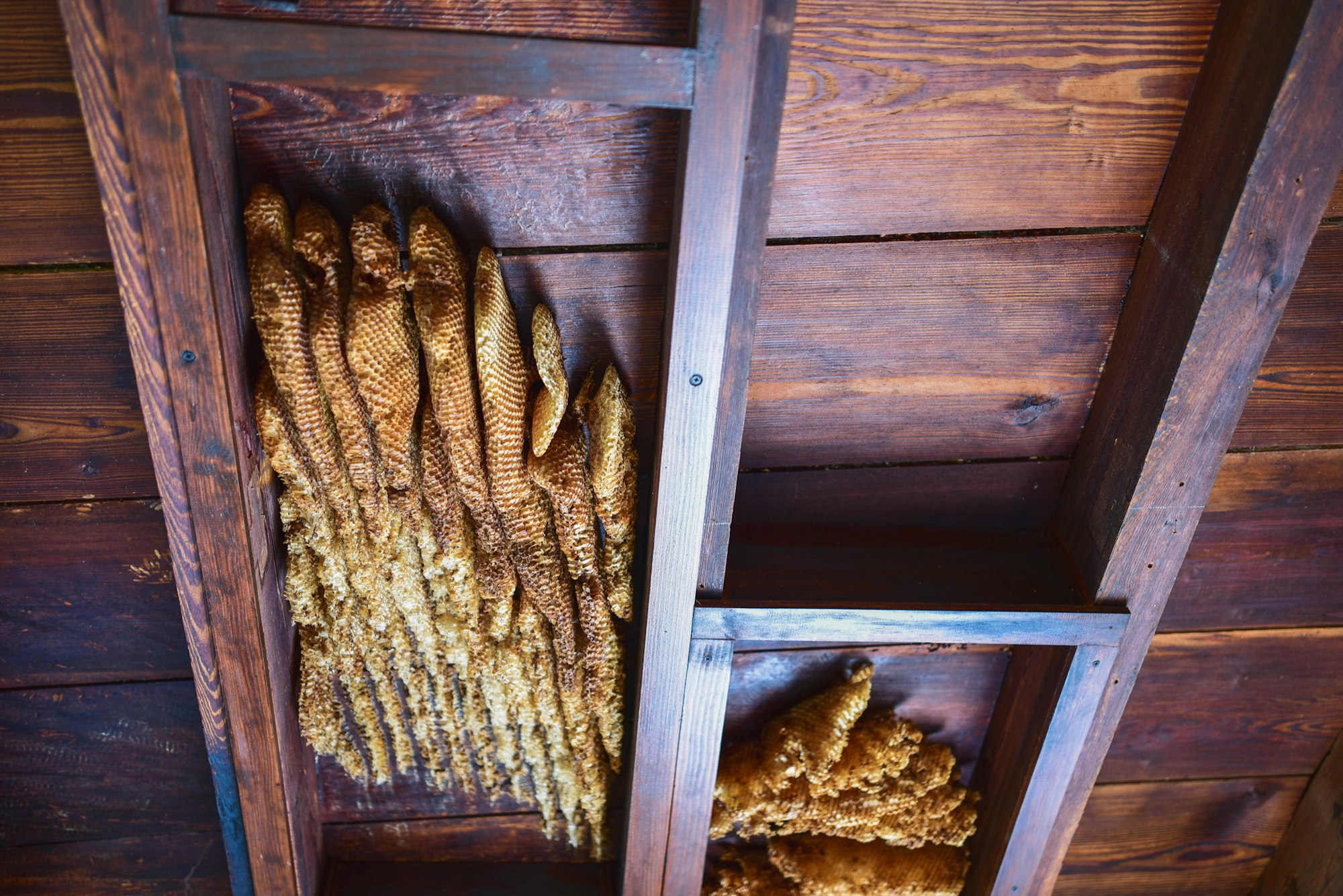Bees

Bees are sometimes mistaken for yellowjackets or wasps. Here are some similiarities and differences:
- Both can be yellow in color (though not all species are), but yellowjackets and wasps have shiny bodies while bees are fuzzy or hairy.
- Individual bees can only sting once while individual yellowjackets can sting multiple times.
- Yellow jackets feed on other insects as well as nectar, while bees feed only on nectar.
- Both bees and some species of yellowjackets build nests above ground, but only yellowjackets build nests underground.
- Bees produce honey and feed on nectar and pollen from flowers. Yellowjackets do not produce honey.
An established bee hive will look like many bees coming and going from the same place. It may be a hole, a tree cavity, or an opening in a structure.
At this time, Africanized honeybees are not found in the Bay Area.
Swarming bees
The District does not remove bee swarms or colonies.

A bee swarm looks like a cluster of bees hanging from a branch or other object. These bees have left their colony and are looking for a new home. They will move on in a few hours to a few days, so you can simply let them leave on their own if it’s safe to do so.
A bee colony is a bunch of bees living in a structure (like a wall, under a porch, in a crawl space) or already moved into a hole in tree, etc.

If you want either a swarm or a colony removed, learn more at the San Mateo Beekeepers’ Guild website; there is likely a local beekeeper that will provide them with a home. If you need a swarm removed, this list will help. If you need a colony removed, this list will help.
You can prevent a swarm from taking up residence on your property by ‘bee-proofing’. Caulk or screen small openings to your structures, and look for things like upside-down flower pots, open electrical boxes, discarded appliances, and other areas where there may be a small hole leading to a larger cavity.
Solitary bees
Most people are familiar with honeybees, but California has a rich diversity of solitary bees. It has been said that California is like the Amazon rainforest when it comes to solitary bee diversity. There are at least a thousand species (the yellow-faced bee, the leaf cutting bee, and the digger bee to name a few) and all are excellent pollinators for your garden and 100% native! These bees live alone – often building tunnels where they place a single ball of pollen or pile of leaf cuttings with eggs laid on the surface which they will then bury or cover to keep them safe. These bees prefer California native plants so if you’ve been considering low water options for your garden, consider creating a California landscape! You’ll not only help the environment, you’ll be helping the bees as well!
Page last reviewed: June 17, 2025
